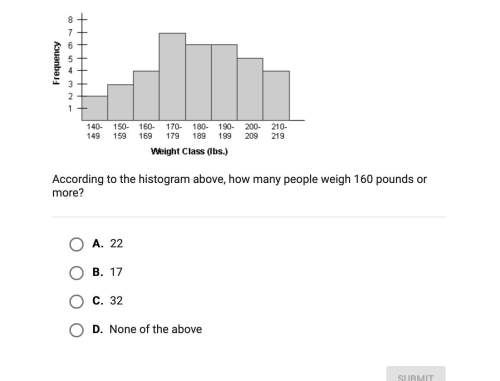
Mathematics, 02.12.2019 22:31 josephacarmona
The joint density function of x and y is given by f(x, y) = xe^(-x(y+1)) x> 0, y > 0
a. by just looking at f(x, y), say if x and y are independent or not. explain.
b. find the conditional density of x, given y=y. in other words, fx|y(x|y).
c. find the conditional density of y, given x=x.

Answers: 2


Another question on Mathematics

Mathematics, 21.06.2019 12:40
Match each function with the corresponding function formula when h(x)=5-3x and g(x)=-3+5
Answers: 1

Mathematics, 21.06.2019 17:30
Lindsay used two points, (x,y; ) and (+2.82), to find the equation of the line, y = mx + b, that passes through the points. y2-y, first, she used the definition of slope and determined that the value of mis x, - . given this information, which expression must represent the value of b?
Answers: 2

Mathematics, 21.06.2019 20:30
3.17 scores on stats final. below are final exam scores of 20 introductory statistics students. 1 2 3 4 5 6 7 8 9 10 11 12 13 14 15 16 17 18 19 20 57, 66, 69, 71, 72, 73, 74, 77, 78, 78, 79, 79, 81, 81, 82, 83, 83, 88, 89, 94 (a) the mean score is 77.7 points. with a standard deviation of 8.44 points. use this information to determine if the scores approximately follow the 68-95-99.7% rule. (b) do these data appear to follow a normal distribution? explain your reasoning using the graphs provided below.
Answers: 1

Mathematics, 21.06.2019 21:00
Evaluate 5 + 6 · 2 – 8 ÷ 4 + 7 using the correct order of operations. a. 22 b. 11 c. 27 d. 5
Answers: 1
You know the right answer?
The joint density function of x and y is given by f(x, y) = xe^(-x(y+1)) x> 0, y > 0
Questions


Computers and Technology, 30.11.2019 04:31





Business, 30.11.2019 04:31


Computers and Technology, 30.11.2019 04:31









Computers and Technology, 30.11.2019 04:31





